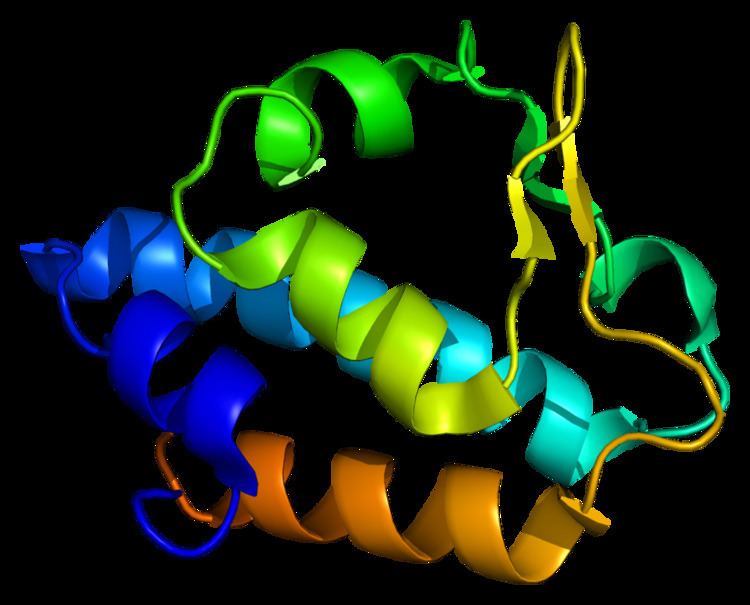Entrez 55768 | Ensembl ENSG00000151092 | |
 | ||
Aliases NGLY1, CDG1V, PNG1, PNGase, CDDG, N-glycanase 1 External IDs MGI: 1913276 HomoloGene: 10117 GeneCards: NGLY1 | ||
PNGase also known as N-glycanase 1 (EC 3.5.1.52) or peptide-N(4)-(N-acetyl-beta-glucosaminyl)asparagine amidase is an enzyme that in humans is encoded by the NGLY1 gene. PNGase is a de-N-glycosylating enzyme that removes N-linked or asparagine-linked glycans (N-glycans) from glycoproteins. More specifically, NGLY1 catalyzes the hydrolysis of the amide bond between the innermost N-acetylglucosamine (GlcNAc) and an Asn residue on an N-glycoprotein, generating a de-N-glycosylated protein, in which the N-glycoylated Asn residue is converted to asp, and a 1-amino-GlcNAc-containing free oligosaccharide. Ammonia is then spontaneously released from the 1-amino GlcNAc at physiological pH (<8), giving rise to a free oligosaccharide with an N,N’-diacetylchitobiose structure at the reducing end.
Contents
Discovery
Occurrence of cytoplasmic PNGase activity in mammalian cells was first reported in cultured cells. This enzyme differ from other “reagent” PNGases from almond (glycoamidase/PNGase A), or bacteria (N-glycanase/PNGase F), that is often used for structural/functional studies of N-glycans, in several enzymatic properties, including the requirement of a reducing reagent for activity and a neutral pH for optimal activity.
The gene encoding the cytoplasmic PNGase was first identified in budding yeast, Saccharomyces cerevisiae and gene orthologues have since been found in wide variety of eukaryotes including mammals. In terms of the tissue distribution of the mouse Ngly1 gene, enzyme activities as well as transcripts were detected in all tissues/organs examined.
Structure
The catalytic residues of the cytoplasmic PNGase is known to reside in a domain called transglutaminase domain. NGLY1, when compared with the yeast orthologues, possesses extended N-terminal and C-terminal sequences in addition to the transglutaminase domain. Among the additional domains found in NGLY1, the PUB (PNGase- and ubiquitin-related) domain was first identified through a bioinformatics analysis. While it was initially hypothesized that it might serve as a protein-protein interaction domain, experimental evidence supporting this hypothesis is now accumulating. On the other hand, the C-terminal PAW domain (a domain present in PNGases and other worm proteins). has now been shown to be involved in the binding of oligosaccharides to PNGase.
In terms of the crystal structures of mouse Ngly1, a catalytic core domain, a C-terminal domain including PAW domain and an N-terminal domain including PUB domain. have been obtained.
Function
Regarding the function of NGLY1, it has been shown that the enzyme is involved in the ER-associated degradation (ERAD), one of the ER quality control/homeostasis systems for newly synthesized glycoproteins. The functional importance of NGLY1 in the ERAD process, however, is not clearly understood. It has also been suggested that NGLY1 is closely involved in MHC class I-mediated antigen presentation. The Ngly1-mediated (glycosylated) Asn-to-Asp deamidation constitutes, together with other reactions such as transpeptidation, unconventional post-translational modifications for antigenic peptides that are presented by MHC class I molecules.
NGLY1-binding proteins
Through yeast two-hybrid screening, it has been shown that NGLY1 proteins can bind to several proteins, mostly through the N-terminal domain including the PUB domain. In vivo and in vitro interactions between NGLY1 and several ERAD-related proteins have been reported. While the importance of those protein-protein interactions to NGLY1 functions remain to be clarified, it can be assumed that such interactions may be advantageous for an efficient ERAD process.
Clinical significance
In 2012, a human genetic disorder involving mutations in the NGLY1 gene locus was identified through an exome analysis. As of now, the clinical features of 11 patients have been reported. One cerebral visual impairment (CVI) patient also had a mutation in NGLY1 gene. Details of the mechanism responsible for the pathogenesis of the NGLY1-deficiency remains unknown, while the intracellular accumulation of N-GlcNAc proteins, due to the excess action of cytosolic endo-b-N-acetylglucosaminidase to misfolded glycoproteins, in Ngly1-deficient cells has been hypothesized as a potential cause.
An NGLY1 deficiency has drawn attentions in the public.
